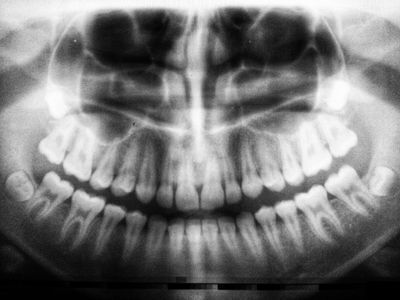
A newly published case report in Cureus brings to light a compelling instance of Gorham-Stout disease, also known as vanishing bone disease, affecting the mandible of a 14-year-old patient. This rare condition is marked by progressive osteolysis—where bone tissue is gradually resorbed and replaced with vascular or lymphatic tissue. The full case study, titled "Massive Osteolysis of the Mandible in Gorham’s Disease: Our Case Experience," provides valuable insight into the presentation, diagnosis, surgical management, and clinical implications of this unusual disease.
Case Summary
The patient presented with a pathological fracture of the mandible following a tooth extraction. Initial signs included loose teeth, pain when chewing, and mandibular deviation. Imaging revealed severe osteolysis in the right jaw, while bloodwork and endocrine studies were unremarkable. Following clinical and radiographic analysis, the diagnosis of Gorham-Stout disease was confirmed.
Surgical intervention involved a right submandibular approach to reconstruct the jaw with a load-bearing titanium plate, after ligating nearby facial vessels to control bleeding. Four months postoperatively, the patient showed improved mandibular alignment and function.
What Is Gorham-Stout Disease?
Gorham-Stout disease is an extremely rare skeletal condition—fewer than 400 cases have been reported worldwide—where bone is progressively destroyed and replaced by angiomatous tissue. It is monocentric but locally aggressive, and often misdiagnosed due to its rarity and non-specific symptoms. The disease can affect any part of the skeleton including the maxillofacial region.
Diagnostic and Clinical Challenges
The paper emphasizes that the diagnosis is one of exclusion. Other conditions such as Langerhans cell histiocytosis, osteomyelitis, cancers, or genetic syndromes must be ruled out. Hallmark diagnostic criteria include:
- Progressive local bone resorption
- Absence of new bone formation (osteoblastic activity)
- No hereditary, metabolic, infectious, or neoplastic cause
Radiographs remain the most effective diagnostic tool, revealing well-defined radiolucent zones that evolve into complete bone loss.
Management and Outcomes
There is no universally accepted treatment protocol for Gorham-Stout disease. This case was managed surgically with reconstructive plating, which successfully restored function. Other treatment strategies reported in the literature include:
- Radiation therapy
- Bisphosphonates
- Interferon α-2b
Despite its often ominous appearance on imaging, spontaneous remission may occur, and outcomes depend largely on the location and extent of involvement.
Conclusion
This case illustrates the importance of including massive osteolysis in the differential diagnosis of facial bone lesions—especially when symptoms such as pathological fractures and loose teeth appear in adolescents. Increased awareness among dental professionals and radiologists can lead to earlier diagnosis and better management of this rare but impactful disease.
Read the full study here:
Massive Osteolysis of the Mandible in Gorham’s Disease: Our Case Experience – Cureus










